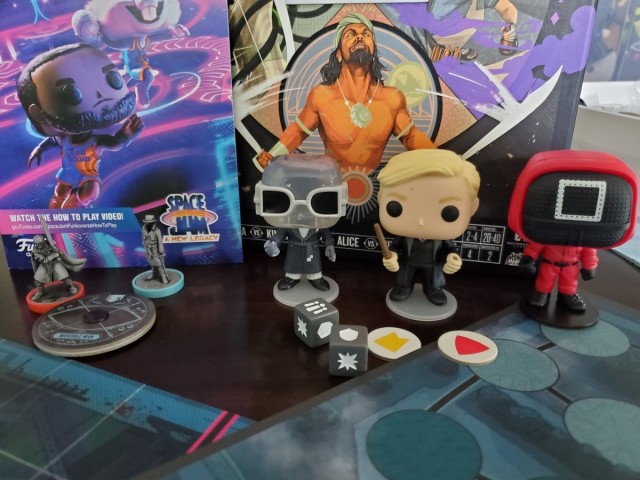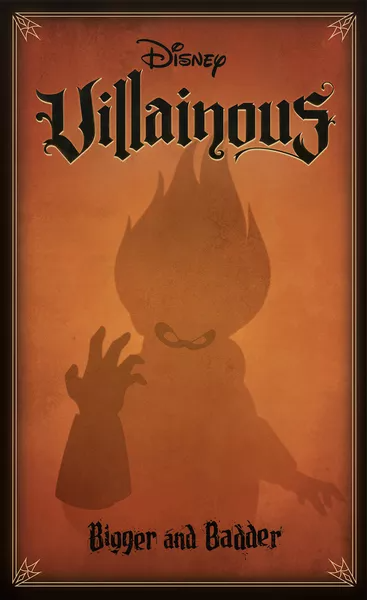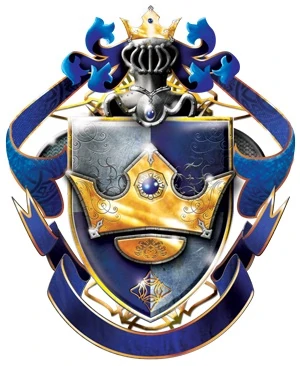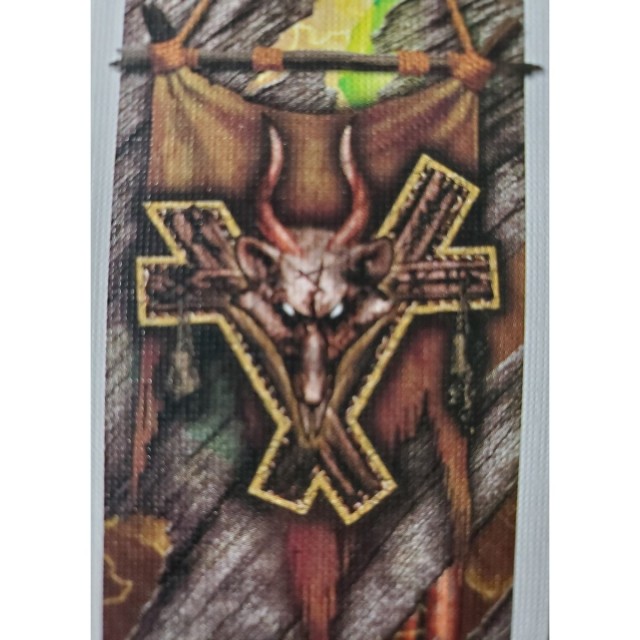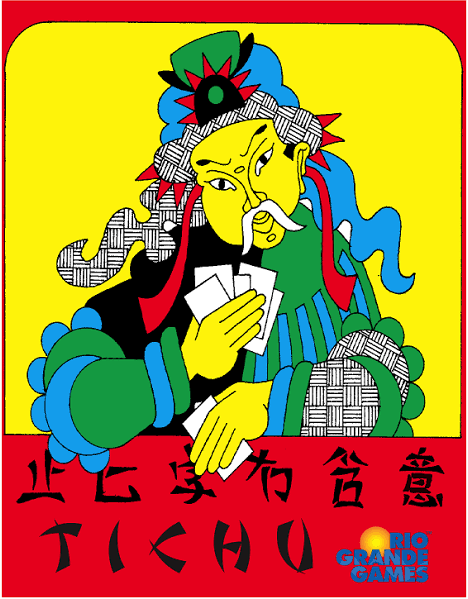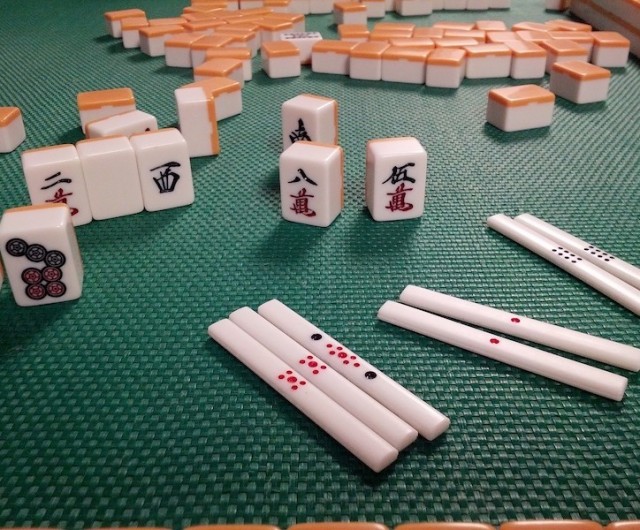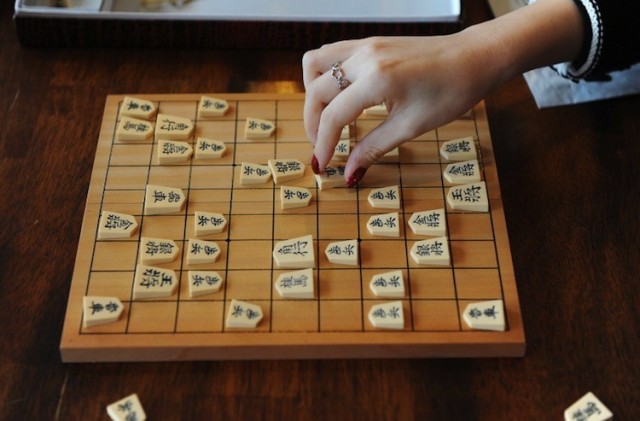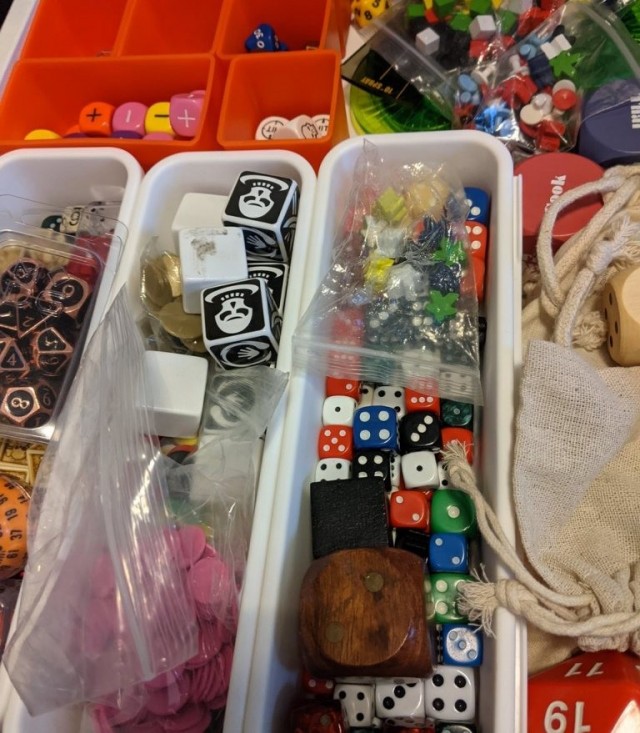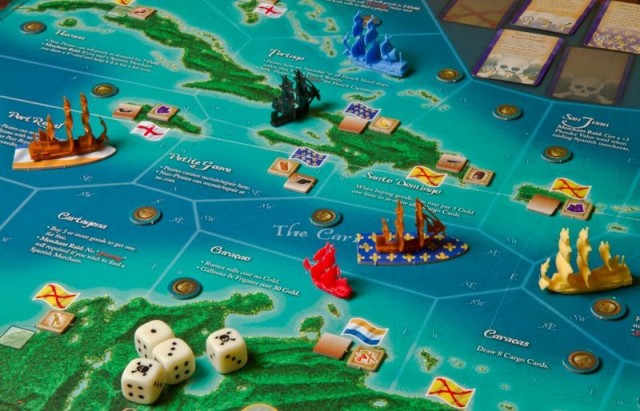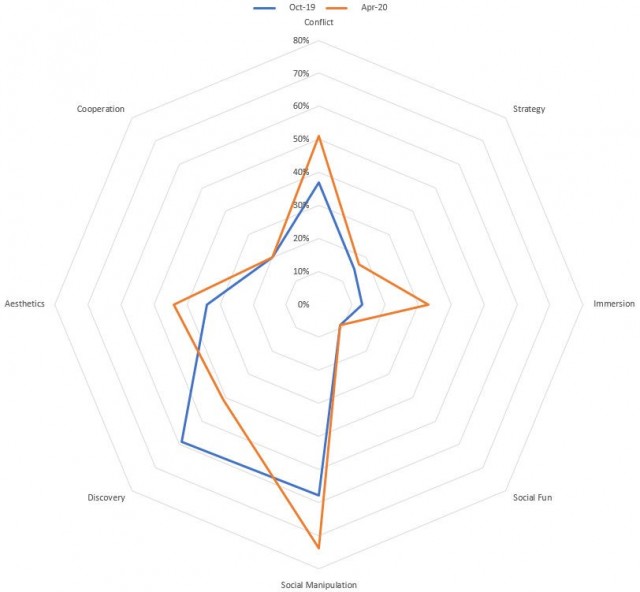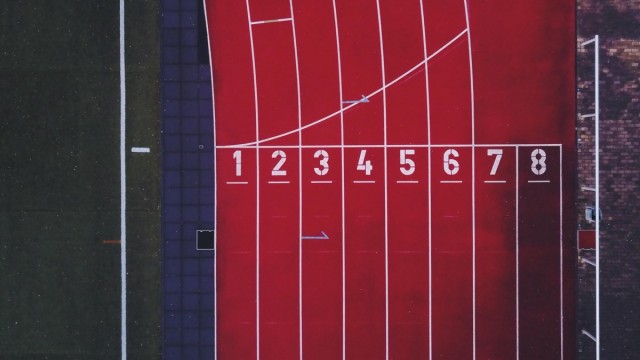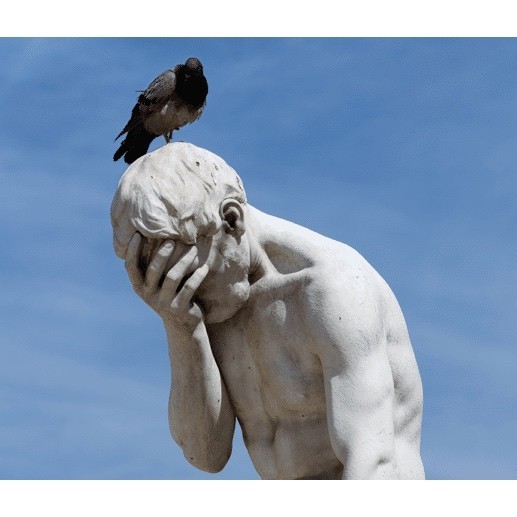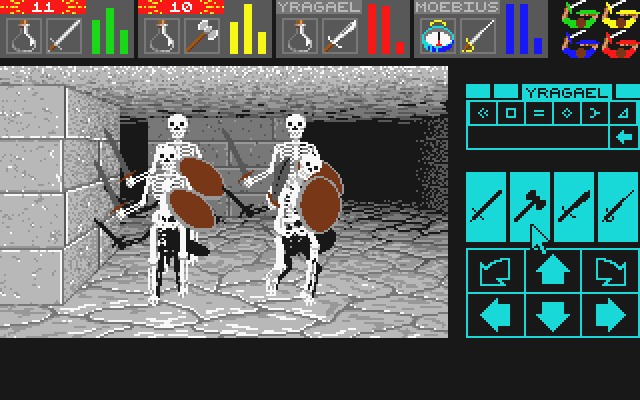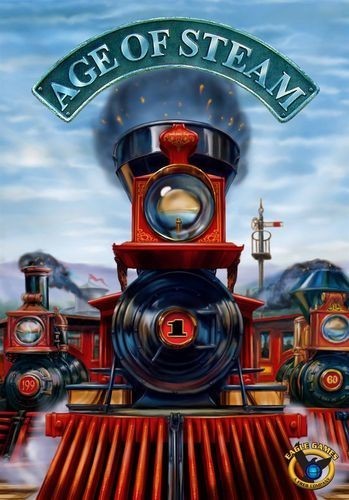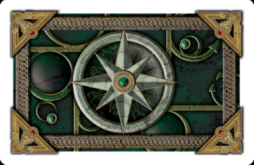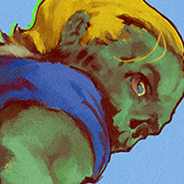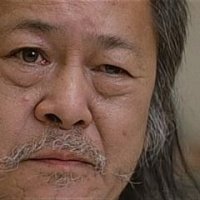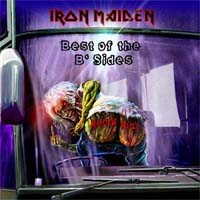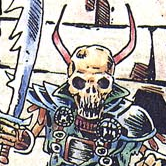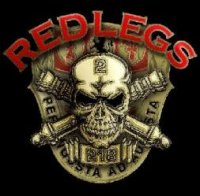We have a group that plays big games of Talisman with every expansion a few times a year, and I like to get my own games together from time to time. Our big games always have all the Adventure Cards mixed together into one giant deck. I decided for my games I'd rather have a smaller and more coherent decks centered around various themes.
We have a group that plays big games of Talisman with every expansion a few times a year, and I like to get my own games together from time to time. Our big games always have all the Adventure Cards mixed together into one giant deck. I decided for my games I'd rather have a smaller and more coherent decks centered around various themes.
One massive Adventure Deck does have some benefits. There's excitement in never being able to predict what lies ahead. Players have a chance to see a little bit of everything. Unique cards will never come up twice. It has some eccentricities as well; an odd shuffle could mean that there aren't many of a card type such as events or enemies, the Firelands could be important to the game or nonexistent, etc. Most often the giant Adventure Deck's drawback is that players never really get the full flavor of any particular expansion, setting, or theme in the 600+ cards stacked and ready for play.
Themed Adventure Decks allow for some focus. Selecting cards with a setting in mind gives Talisman back some specific flavour that gets lost in the big Adventure Deck. The big drawbacks to themed Adventure Decks are maintenance of building them, maintaining balance, and if mixed together separating them again.
The Approach
This article is going to focus on how I first tried to build themed Adventure Decks, how I failed, and what I ended up with. It all starts with my initial approach.
I built a spreadsheet of the general card distribution in the base game deck and each expansion deck. Categories such as Good Event, Neutral Event, and Bad Event were used to categorize Events in each deck, for example, and what determines if an Event is good or neutral or bad is entirely subjective. Less subjective was the categorization of enemies and objects based on their properties.
I'll be referencing the spreadsheet a lot. It's located here.
A few things came to light from building the spreadsheet. Compared to a single massive Adventure Deck the base game Adventure Deck is heavy in Gold and Amour, and light on Craft enemies. The Reaper brings in more weak Craft enemies (as well as Strength enemies) and generally makes Craft-focused characters more viable. The Sacred Pool brings in more Craft enemies again, while the other expansions have a more even enemy distribution. Most of the expansions dial up the percentage of cards that are objects while dialing down the amount of Gold and Armour. Each expansion with Adventure Cards shifts the balance of the deck in some way, but as they're added to the base deck it starts to appear that FFG was patching and balancing the Adventure Deck as they went along. The final distribution of a single Adventure Deck with all expansions is reasonably balanced percentage-wise, but the sheer size of it means that balance isn't always seen in play.
With this information in hand the card distribution of a single massive Adventure Deck looked like a good target for themed Adventure Decks. Looking through the cards and thinking about themes led me to the conclusion that three themed decks would probably work best. Each deck would have around 200 cards. A deck of that size may need to be reshuffled in a long game, but that would be unlikely and there would be a fair chance to get a good way through the deck so that the card distribution could be realized in play.
True Themed Decks
The idea behind themed decks was to create decks based on settings, not "enemies deck" or "objects deck". My initial effort was creating a Frost deck, a Fire deck, and a Haunting deck. Frostmarch, the Firelands, and the Blood Moon expansions would form the basis for each deck, padded with suitably setting-supporting cards from all the other decks. Some Frostmarch and Firelands cards ended up in the Haunting Deck, and some Blood Moon cards ended up in the Frost and Fire decks. Sorting the cards into their decks was based solely on the artwork and feel of the cards with no eye for balance or distributions or percentages. Settingless cards such as Gold or basic Armor were removed to be split between the decks later.
I only made it about thirty minutes into sorting by this method before I ran into problems. The first big problem was that my Haunting deck was quickly outgrowing my Frost and Fire decks. I knew I would have to redistribute a lot of cards to reach my target card distributions, but there weren't a lot of spooky cards I felt fit very well with the Frost and Fire decks. The Fire deck had a lot of objects and bad events, so it would ultimately have to be padded out with things that weren't very Fire-y. I also realized I had a maintenance nightmare on my hands; the only way to reconstruct these decks was going to be card lists, and I loathe the idea of creating multiple 200-card lists for a game like Talisman.
I had some really cool concepts floating around in these decks that reinforced the validity of the themed adventure deck idea, but I had to find another approach.
Expansion-based Themed Decks
Armed with trusty spreadsheet I went back to the drawing board. Maintainability was now a driving force and I started playing with mixing and matching expansions to create themed decks. The knowledge that this approach wouldn't be as grand as my original concept was very real, but I decided to see what I could work out by only mixing specific expansions together so that decks could be quickly constructed and deconstructed.
It became pretty obvious pretty quickly that I wasn't going to be able to use the Frostmarch and Firelands expansions as a basis for their own decks. The distribution of each is just a bit too odd to be balanced by just mixing in another expansion. The Haunting deck looked like it could still be viable, but even so I had to come up with some different ideas for settings.
The process became one of mixing and matching expansions until the card count and distribution came close to what a single all-in Adventure Deck would provide, then evaluating the places the distributions were out of line vs combinations that made for interesting settings. It wasn't a particularly exciting exercise. It was solving a system of equations: Talisman edition.
The Themed Decks
Here's what I came up with:
The Basic Deck
This deck is just the base game deck with the Reaper expansion mixed in. It's still a bit light on Craft enemies and is very light on good events, while being slightly heavy with Followers. It's a pretty balanced deck though, typically within a percentage point or two of my distribution target. It's a no-frills deck without a lot to keep track of that should provide a real solid Talisman experience for new players. It also provides the most vanilla fantasy land Talisman experience of the three decks listed here.
The Witchery Deck
This deck consists of only the Blood Moon and Sacred Pool expansions, and is where things start getting a bit more hairy for the players. This deck is heavy on Places, Strangers, and Followers. It's got a slight abundance of Craft enemies and slightly fewer Strength enemies. It has all the spooky and mystical cards and effects of these two expansion decks and is a really solid proxy for my original Haunting deck concept. Definitely use the Werewolf with this deck; there are a few cards that can interact with Lycanthropes. One unintended consequence of this deck is that while the overall percentage of event cards matches my target, the event distribution is definitely skewed towards good events. So bring on the Harbinger and let's talk spooky end times.
The Heavy Metal Deck
This deck is made up of the Cataclysm, Frostmarch, and Firelands expansion cards. It is a world in peril. Play this one on the Cataclysm board and be prepared for a lot of Terrain Cards, Firelands tokens, and the world of Talisman shattering into glaciers and deserts. You'll end up with Ifrits and Firelands tokens sharing spaces with Frost Giants and other lost creatures. The general distribution of this deck is mostly within one percentage point of the goal, with a caveat or two. There are more bad events than neutral or good. There's an abundance of objects but not many Followers. There are slightly more events in total than the goal, so let's bring in the Harbinger again and talk real end times.
Deck Adjustments
I made a few more changes than the simple decks outlined above.
Corner Board Cards
The corner boards come with a few cards that would be mixed into the Adventure Deck that do things such as provide alternate entrances to the boards or bring some board effects to the main board. I divided these cards into 3 mini-decks and shuffled each mini-deck into one of the themed decks. The card lists I used for these are in my spreadsheet, but really these cards can be used to taste.
Rune Gates and Talismans
I removed all the Rune Gate and Talisman cards from all the Adventure decks except for one card. There's a special Talisman in the Firelands expansion that I left in because it can't be burnt from Firelands cards, and having it is a ray of hope in an apocalyptic time.
Rune Gates and Talismans can be shuffled into any one of the decks above to provide a quicker game. Separating the Rune Gates into the three decks really wastes their utility, so go all or none with them.
The Gold Adjustment
This is completely optional as well, but easy to do and helps brings the distributions of two of the themed decks in line with the target. Pull four 1 Gold cards out of the base game cards and all 2 Gold cards out of the Reaper expansion cards. Add them all to the Witchery deck.
Summary
Three themed decks, easily sorted or unsorted, with about 200 cards and a good distribution each. Not quite as cool as some of my initial ideas, but so much more maintainable and still each with their own character.
 Games
Games How to resolve AdBlock issue?
How to resolve AdBlock issue? 